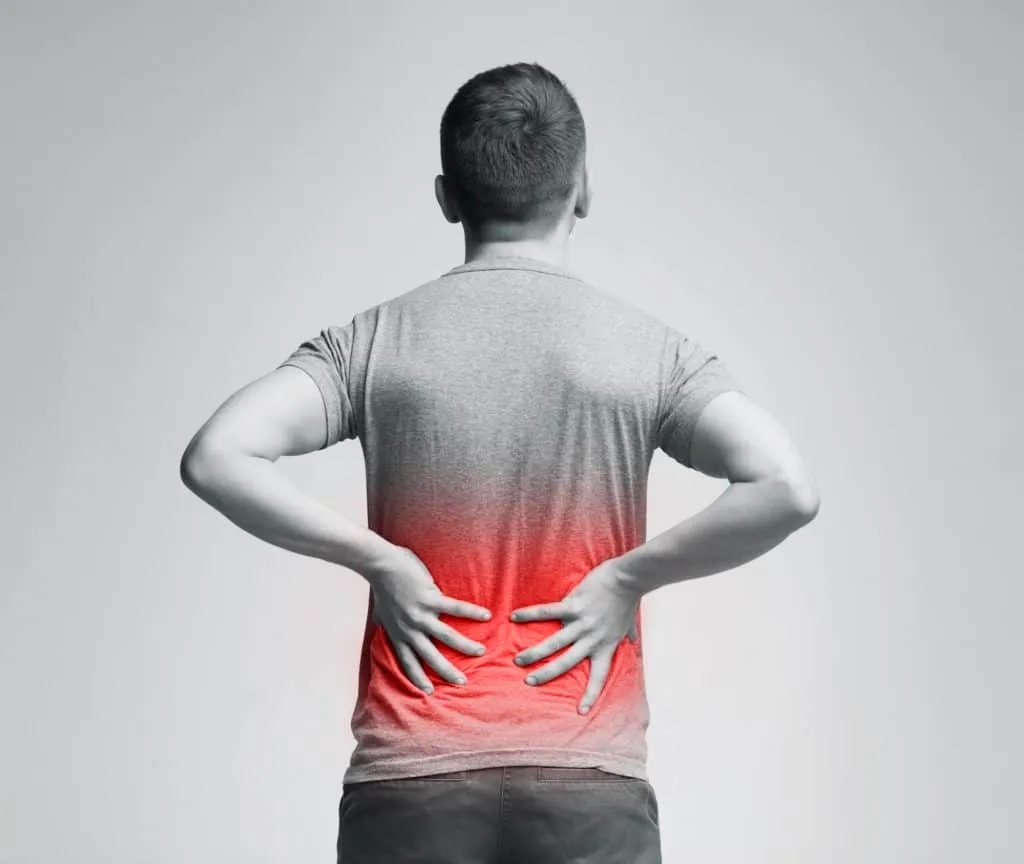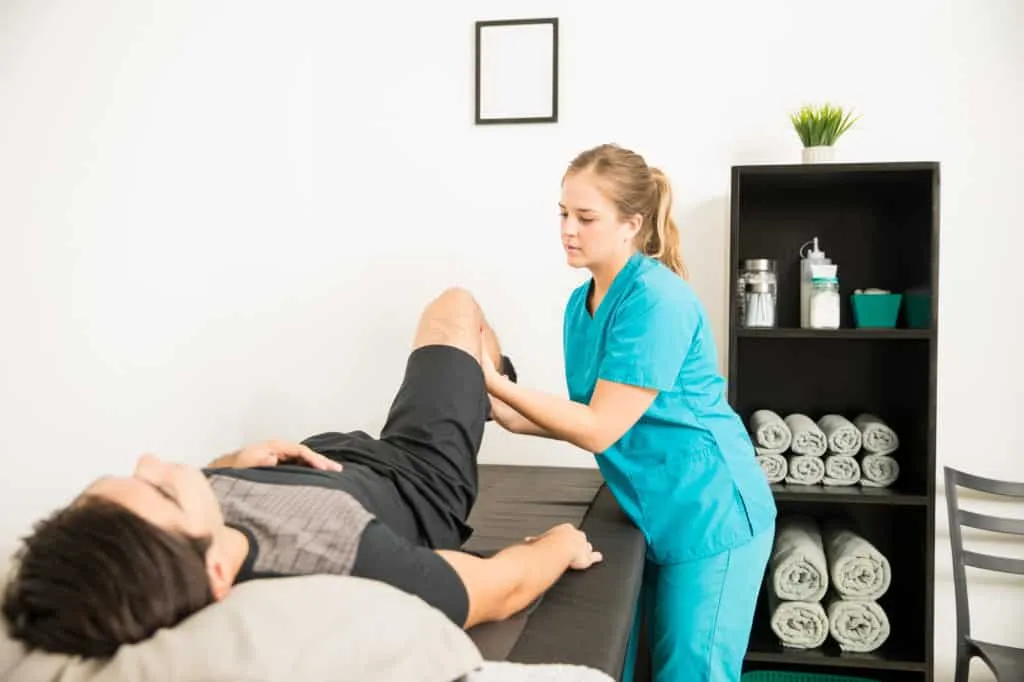Do you have pain that you think might be Sciatica?
Let us help you find the cause and get out of pain fast.
Sciatica is one of the most common pain conditions we see in the Universus Physical Therapy clinic.
We typically see it in men and women between the ages of 40 – 60 years old. Most commonly, in those with diabetes, pregnant women, and obese individuals, the extra weight makes the discs in their back more prone to wear and tear. Or in the case of people with diabetes – they are susceptible to sensory issues and nerve damage.
But it doesn’t just occur in people with extra body weight either. It can also affect those working in professions that involve carrying heavy weights as part of their job.
It can feel slightly hopeless being told you have sciatica but we’re here to support you. Why not get in touch now and see how we can help you on your journey to a better tomorrow.
But why does wear and tear cause sciatica?
More Blogs From Universus
Can Physical Therapy Help with Postpartum Depression?
Is Bad Posture Causing My Back Pain?
Is Pain Putting The Brakes On Your Sex Life?
What Causes Sciatica?

Well, Sciatica is a type of nerve pain. Over an extended period, the spinal discs that are under pressure can suffer damage and then encroach on the surrounding nerves – primarily the sciatic nerve – resulting in the painful symptoms of Sciatica. This large nerve runs from your lower back down into your legs (on both sides).
Sciatic nerve pain generally arises when spinal stenosis (narrowing), bone spurs, or the herniated discs we mentioned compress the nerve. The pain tends to start from the lower back and travels down through the hips to the legs. In most cases, it only affects one side of the body at a time, but in chronic cases, it can occur on both sides of the body; however, it is rare.
Other contributing factors include poor posture, tautness in the muscles of the legs or back, or too much or too little mobility of the lumbar spine. When we treat patients with Sciatica, the objective is to find the root cause. For example, what is putting pressure on your sciatic nerve, and how can we remove it?
How To Treat Sciatica
There are different kinds of treatment available for Sciatica, with physical therapy and therapeutic exercise often playing a vital role in resolving the condition.
Without treatment, around 30% of patients with severe Sciatica run the risk of it becoming a chronic condition – with little to no relief from the pain without invasive surgery or painful injections. Therefore, finding the root cause of Sciatica and getting proper treatment is essential to prevent reoccurrence, chronic pain, and further damage to the sciatic nerve.
What Are The Symptoms of Sciatica?

Some of the most common symptoms associated with Sciatica include:
- Pain begins in your buttock or lower back and travels along the sciatic nerve to the back of the thigh and leg and your foot (on the same side).
- A tingling or burning sensation traveling downwards from your hip into the leg. Like, pins and needles.
- Continuous pain in a single side of the leg or buttock. Occasionally both sides.
- A prickling sensation accompanied by weakness or numbness in the leg.
- Acute pain in one of your legs that makes it difficult to sit in one position for too long.
- Constant pain in one of your hips.
- Numbness or weakness in the foot or leg and difficulty moving.
- Symptoms worsen with movement and changing positions with decreased pain when lying down.
Important Points to Consider About Sciatica
- Medical conditions differ between patients: While many people might experience similar symptoms, every individual case of Sciatica is different. The way your symptoms present depends on certain factors like your occupation, existing health conditions, body structure and composition, and age. All these factors can impact your body’s alignment, the pressure on your sciatic nerve, and the severity of your symptoms. So, it’s vital to find an experienced physical therapist who can spot the signs and diagnose the condition.
- Bed rest is not the best solution: In the initial stages of sciatic pain, getting adequate bed rest can alleviate the condition’s symptoms. Unfortunately, this is not always the case. When you remain inactive for an extended period, it can lead to additional sciatica-related complications. Your muscles become rigid, which further aggravates the sciatic nerve and worsens the pain. Instead, try to stay active with short, gentle daily walks.
- DIY treatments can be dangerous: When you take over-the-counter medications, especially painkillers, trying to self-treat Sciatica by “masking” the symptoms and ignoring the root cause. It can have serious medical ramifications. If you think you have Sciatica, always consult a medical professional to get a proper diagnosis and treatment. They can help pinpoint and treat the underlying cause and prevent your symptoms and the damage to your nerve from getting worse.
What Are The Benefits of Physical Therapy For Sciatica?

When you engage a physical therapist, it is a hugely effective way to treat the symptoms of Sciatica and prevent them returning – for good. We create a customized treatment plan for you that works to strengthen the muscles that bolster and support your spine, which relieves the offending compression on your sciatic nerve.
It doesn’t matter the cause of your case of Sciatica, whether it’s joint dysfunction, muscular spasms, or a sign of something occurring elsewhere in your body. We quickly and effectively find and treat the underlying issue, release tension in the surrounding soft tissues and free up the compression on your sciatic nerve.
We also analyze the way your body moves and identify the steps you can take to prevent the issue from reoccurring in the future. Treatment is individual, but it will include a combination of techniques to release the sciatic nerve, relieve pain and restore your mobility, including:
- Manual Therapy: This is a specialized form of physical therapy treatment. We use the hands to relieve stress and pressure on joints and tissue without using any equipment or machines.
- Joint Mobilization: Another specialized hands-on treatment involves passive manual techniques to relieve musculoskeletal issues. It is a part of manual therapy. It may be offered as part of your treatment plan for Sciatica, depending on your underlying cause.
- Cupping: Some practitioners use cupping to treat Sciatica. This form of treatment is nothing new as it has been around since ancient times. Cupping involves the use of specialized cups as part of the treatment. These are precisely placed on the affected areas of the patient’s bare skin and cause suction. Cupping is said to facilitate the release of toxins and remove uncirculated blood from the tissue. The body flushes it out, which promotes healing of the tissues.
- Manual Traction: is a kind of decompression therapy that “stretches” your body to alleviate the spinal pressure that causes Sciatica and helps to treat many primary sciatica symptoms.
- Home Exercises: In the initial stages of sciatica treatment, your physical therapist safely guides you through a series of therapeutic movements and exercises. Later once you can do them correctly, you can do them on your own at home to keep your body mobile and speed up the healing process. Even after complete resolution of your sciatica symptoms, we recommend you continue some exercises to keep your body fit, healthy and mobile.
How To Get Out Of Pain Fast

If you have the symptoms of Sciatica now – like pain that runs from your lower back and down into one of your legs or feel pins and needles or a tingling sensation in the same area, we recommend you book an appointment with a physical therapist as soon as possible.
Because if you don’t act promptly, you’re in danger of the condition becoming chronic or potentially even experiencing problems with your bowel and bladder function.
At your first appointment, we perform a complete evaluation of your symptoms and medical history and diagnose whether you do indeed have Sciatica. If you do, we then recommend a course of customized physical therapy sessions to alleviate the pain and restore your functionality and mobility.
Are you ready to get out of pain?
If you’re not sure whether physical therapy is right for you. Don’t worry. We offer all new patients a free appointment to talk with a physical therapist – either over the telephone or in-person at our clinic with zero financial investment on your part. We can usually tell from this first chat and analyzing how you move whether we suspect Sciatica.
So, please don’t put up with it.
Take the first step to getting out of pain and book your free appointment.


